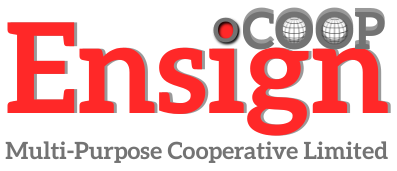How do we meet our members needs and aspirations?
At Ensign, our business, particularly one structured as a cooperative (co-op), meets community’s needs and aspirations through various mechanisms that align with our values of fairness, inclusivity, and sustainability. Here’s how Ensign business model achieves this:
1. Living Wages and Fair Compensation
- How: The co-op commits to paying all employees a living wage, which is enough to cover basic needs such as food, housing, healthcare, and education. By doing so, the co-op ensures that its workers can maintain a decent standard of living.
- Impact: This approach not only improves the quality of life for employees but also fosters loyalty, reduces turnover, and enhances productivity.
2. Employee Ownership and Participation
- How: Employees are eligible to become members of the co-op, which gives them ownership stakes and voting rights in the business. They participate in decision-making processes, including setting wages, determining business strategies, and deciding how profits are reinvested or distributed.
- Impact: This creates a sense of ownership and responsibility among employees, leading to more engaged and motivated workers. It also ensures that decisions reflect the needs and aspirations of the entire workforce.
3. Community-Focused Operations
- How: The co-op prioritizes serving the local community by sourcing materials locally, providing services that meet specific local needs, and reinvesting profits into community development projects like education, infrastructure, or healthcare.
- Impact: This strengthens the local economy, supports small businesses, and contributes to the overall well-being of the community.
4. Sustainable Business Practices
- How: The co-op adopts environmentally friendly practices, such as reducing waste, using renewable energy, and sourcing sustainable materials. It may also educate members and the community on sustainability.
- Impact: This approach ensures that the co-op’s operations have a minimal environmental impact, contributing to long-term ecological health and setting an example for other businesses.
5. Social Equity and Inclusion
- How: The co-op actively promotes diversity and inclusion by ensuring equal opportunities for all employees, regardless of gender, race, or background. It may implement training programs to support underrepresented groups and ensure that leadership reflects the diversity of the community.
- Impact: This creates a more equitable workplace, reduces social inequalities, and helps the co-op attract a wider talent pool.
6. Education and Skill Development
- How: The co-op invests in continuous education and skill development for its members and employees. This could include vocational training, leadership development, and workshops on co-op management.
- Impact: Employees are empowered with the skills and knowledge needed to advance their careers, leading to personal and professional growth. It also strengthens the co-op’s overall capabilities.
7. Ethical and Transparent Governance
- How: The co-op operates with transparency, regularly sharing financial information, business challenges, and strategic plans with all members. Decision-making processes are democratic, with all members having a say.
- Impact: This builds trust among members, ensures accountability, and fosters a culture of ethical business practices.
8. Profit Sharing and Reinvestment
- How: Profits generated by the co-op are either shared among members based on their contribution or reinvested into the business to improve operations, expand services, or fund community projects.
- Impact: This ensures that the benefits of the co-op’s success are distributed fairly among those who contribute to it and that the business can continue to grow sustainably.
9. Health and Well-Being Initiatives
- How: The co-op could provide health benefits, wellness programs, and safe working conditions for all employees, ensuring their physical and mental well-being.
- Impact: A healthy workforce is more productive and satisfied, reducing absenteeism and healthcare costs.
10. Alignment with Local and Cultural Values
- How: The co-op integrates local cultural practices and values into its operations, ensuring that it resonates with the community it serves. This might include respecting traditional practices, supporting local arts, or engaging in cultural preservation efforts.
- Impact: This strengthens the co-op’s connection with the community, builds goodwill, and ensures that the business is seen as a positive force in the local culture.
By focusing on these areas, Ensign Co-operative businesses will effectively meet the needs and aspirations of its employees, members, and the broader community, while also promoting sustainability, equity, and long-term success.
